The ongoing commemoration of the Great War reveals just how much this episode of our history continues to interest and influence our understanding of the past. However, the Great War continues to be studied primarily as a land-based conflict despite the Royal Navy’s crucial role. Ask someone about Jutland and they will probably look perplexed. Much remains to be done to put the navy back into the public memory of the war, and my own research is working towards this. It considers the personal experience of British sailors during the war as expressed in their diaries, particularly the collection held by the National Museum Royal Navy Portsmouth.[1]
This blog will give a brief insight into my findings so far.
The poignant image of the Great War is of young men rushing to the colours full of patriotic fervour. Surprisingly, little research has been done on sailors’ displays of war enthusiasm. This is especially interesting as many sailors were not volunteers: the navy was a career in those days where men joined at a young age.[2] Yet sailors’ diaries reveal excitement and celebrations amongst seamen when war was declared. Ships left port cheered by other vessels, and men proudly recorded their first encounters with German ships.[3] Further, diaries repeatedly refer to the “long awaited scrap” with the enemy.[4] When they did meet, British sailors boasted of the Germans’ poor gunnery in comparison to their own and clearly there was a distinct belief in the Royal Navy’s superiority, which reflects the latent imperialistic sentiment in British society at the time.[5] Yet, not all were caught up with war fever; Walter Dennis recorded that he knew of a number of sailors who were relieved to get posted overseas away from any real action.[6]
However, prolonged warfare, understandably, had a noticeable effect upon sailors. Despite the distancing effect of technology, sailors remained part of the killing machine which some enthusiastically embraced, becoming numb to the brutalities of war. [7] Interestingly few historians have considered this. One sailor – known as Wood – recorded shelling Turkish forts at Gallipoli as “amusing”.[8] This is further demonstrated by the practice of collecting war souvenirs. Seamen often served in support of the army which allowed them ready access to items such as helmets, rifles and bullets.[9] The impact of curios has been widely considered amongst soldiers but, again, sailors have so far been overlooked.[10] Their obvious engagement in this practice suggests a desire for immediacy, which was not an option for soldiers. It would be interesting to compare the diaries of artillerymen serving at the front, and see whether they encountered similar experiences.[11]
Yet, despite sailors’ interaction with killing, not all became numb to the brutalities. Witnessing the sinking of ships or even hearing about losses was traumatic. For example Walter Dennis recorded being ‘rather concerned’ as to the fate of one of his friends lost at sea.[12] Sailors were acutely aware that if their ships were sunk then death was likely, which made moments such as these particularly sobering. It is not surprising that some succumbed to psychological stresses, or in their words had ‘a tile loose’.[13] Sailors had to develop their own coping mechanisms to deal with the stress of everyday life; these were similar to those developed by soldiers, such as humour. Reflecting on battles many became flippant about the dangers experienced. One diarist, Henry Welch, recalled: ‘One shell burst on the water’s edge… Ye gods! it was lovely – only a trifle further and there would have been a few gaps among us.’[14] Coping with pressure was essential.
It is clear that personal histories of the Great War continue to find a receptive audience as more people become interested in their own history. The opportunity is there for the navy to make up lost ground. The NMRNP’s on-going project, Hear My Story, is a step in the right direction and forms a new twentieth century exhibition collating personal memories and public interaction. [15] Another interesting project is the AHRC funded Gateways project which provides centres to encourage public interest through organised lectures and study days.[16] These projects show that there was much more to the Great War than mud, blood and the trenches. It is time to put the navy back in the picture and, as the diaries of Dennis, Fletcher, Welch and Wood show, each diary tells its own unique story, and there are many more to be uncovered.
Simon Smith read History at the University of Portsmouth followed by an MA in The History of War, Culture and Society. He is currently doing a PhD on Sailors and the Royal Navy c.1870-1939 as part of the University of Portsmouth’s Port Towns and Urban Cultures project.
Originally published for the NACBS here: http://www.nacbs.org/blog/never-mind-the-trenches-experiences-of-british-sailors-during-the-first-world-war-by-simon-smith/
[1]The NMRNP holds approximately 200 diaries in its collection. Other comprehensive diary collections include the Imperial War Museum which has just re-opened with a new WW1 exhibition.
[2]For more information see Christopher McKee, Sober Men and True: Sailor Lives in the Royal Navy, 1900-1945, (London: Harvard University Press, 2002) and Brian Lavery, Able Seamen: the lower deck of the Royal Navy, 1850-1939, (London: Conway, 2011).
[3]RNM 1984/467: Diary of Wood.
[4]RNM 1980/115: Diary of Edwin Fletcher; RNM 1984/467: Diary of Wood; RNM 1980/82: Diary of W Dawson; Diary of Walter Dennis.
[5]RNM 1984/467: Diary of Wood.
[6]Diary of Walter Dennis. Diary digitized by McMaster University, Ontario Canada and available at http://pw20c.mcmaster.ca.
[7]See Edgar Jones, “The Psychology of Killing: The Combat Experience of British Soldiers during the First World War”, Journal of Contemporary History, 41, 2, (2006), 233; Joanna Bourke, An intimate history of killing: face to face killing in twentieth-century warfare, (London: Granta Books, 1999), 7.
[8]RNM 1984/467: Diary of Wood.
[9]Diary of Walter Dennis; RNM 1984/467: Diary of Wood.
[10]See Jones, “Psychology”, and Bourke, An intimate history, for further information of the study of soldiers.
[11]The Imperial War Museum does hold artillerymen’s diaries but these have not yet been considered.
[12]Diary of Walter Dennis.
[13]Diary of Walter Dennis.
[14]DOC: Diary of Henry Welch.
[15]See http://www.nmrn.org.uk/explore/hms-hear-my-story for further information on this project.
[16]The Arts and Humanities Research Council – see www.kent.ac.uk/ww1 for further information on this project.

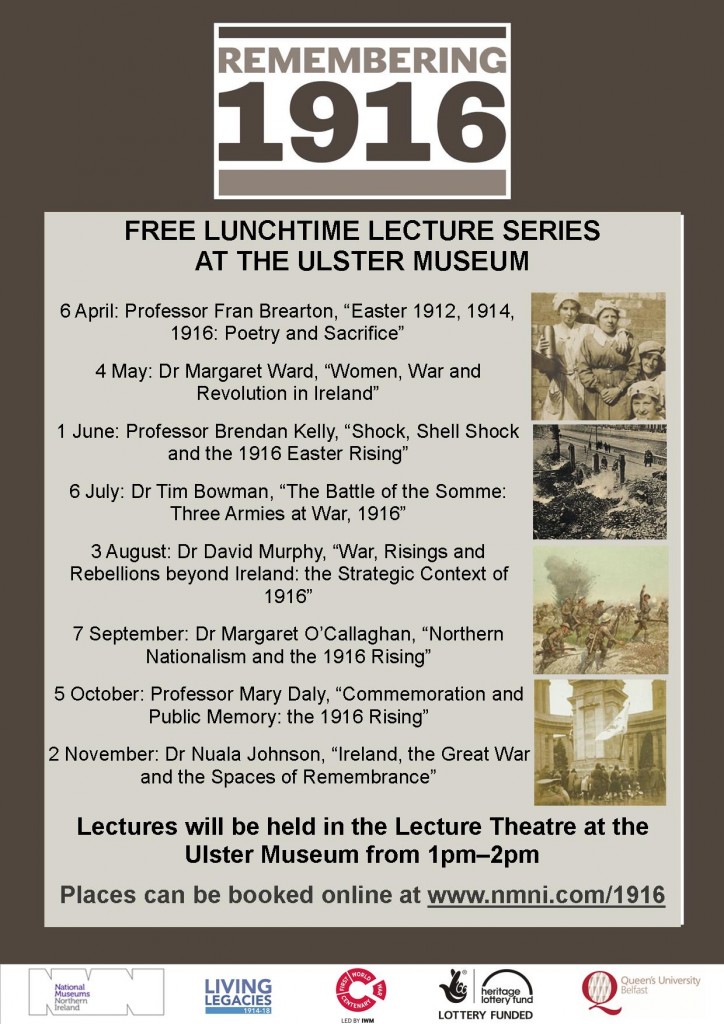
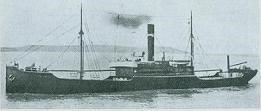
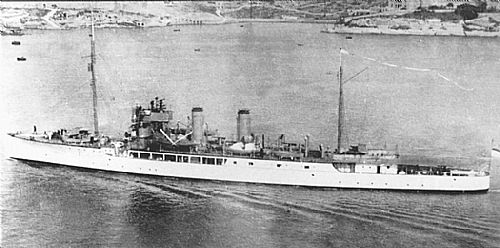

 Q-Ship’s were merchantmen armed with concealed weaponry. They were intended to lure submarines to the surface before exposing the weaponry, typically a deck gun, and opening fire upon the submarine. The name ‘Q-ship’ is derived from the name of their WW1 base i.e. Queenstown, Co Cork. One such Q-ship, HMS Result (built in Carrickfergus), is on display at the Ulster Folk and Transport Museum.
Q-Ship’s were merchantmen armed with concealed weaponry. They were intended to lure submarines to the surface before exposing the weaponry, typically a deck gun, and opening fire upon the submarine. The name ‘Q-ship’ is derived from the name of their WW1 base i.e. Queenstown, Co Cork. One such Q-ship, HMS Result (built in Carrickfergus), is on display at the Ulster Folk and Transport Museum. GRATEFUL, hired drifter, 25 March 1916, North Channel – 107grt, built 1907, Inverness-reg INS322, hired 2/15 as net drifter, 1-3pdr, Admiralty No.2399, 9 crew, Skipper W Ralph (He – Skipper John Reaich RNR), sailing in WNW force 8 gale and snow storm. Driven ashore 100yds from Lloyd’s Signal Station, Torr Head, Co Antrim (wi – in 55.11.50N, 06.03.45W); Coastguard called Portrush RNLI, but coxswain “reluctant to leave the harbour in such heavy seas”, later launched with another coxswain and volunteers from Portstewart as well as Portrush, reached the scene at 0900, but all crew already rescued by breeches buoy three hours before. Salvaged, served in WW2 (H/C/D/He/dk/wi)
GRATEFUL, hired drifter, 25 March 1916, North Channel – 107grt, built 1907, Inverness-reg INS322, hired 2/15 as net drifter, 1-3pdr, Admiralty No.2399, 9 crew, Skipper W Ralph (He – Skipper John Reaich RNR), sailing in WNW force 8 gale and snow storm. Driven ashore 100yds from Lloyd’s Signal Station, Torr Head, Co Antrim (wi – in 55.11.50N, 06.03.45W); Coastguard called Portrush RNLI, but coxswain “reluctant to leave the harbour in such heavy seas”, later launched with another coxswain and volunteers from Portstewart as well as Portrush, reached the scene at 0900, but all crew already rescued by breeches buoy three hours before. Salvaged, served in WW2 (H/C/D/He/dk/wi)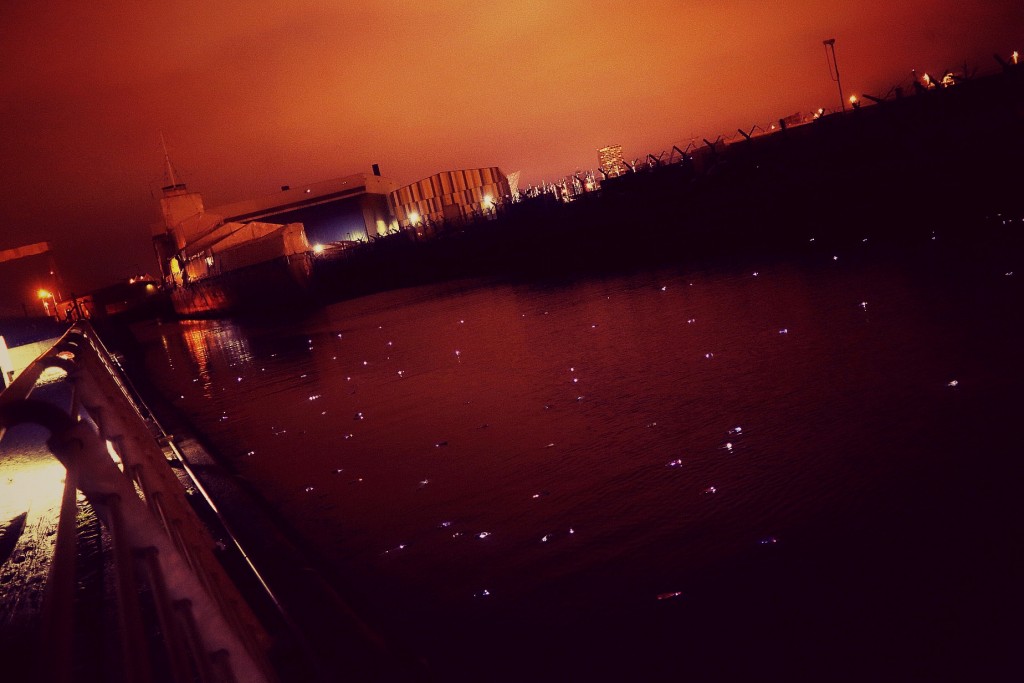 Adults and children across North Belfast took part in workshops to tell the stories of First World War servicemen from their areas. The adults have researched a serviceman and written a letter to a local child about his life. Each child received a letter and designed their glass bottle to represent his story.
Adults and children across North Belfast took part in workshops to tell the stories of First World War servicemen from their areas. The adults have researched a serviceman and written a letter to a local child about his life. Each child received a letter and designed their glass bottle to represent his story.
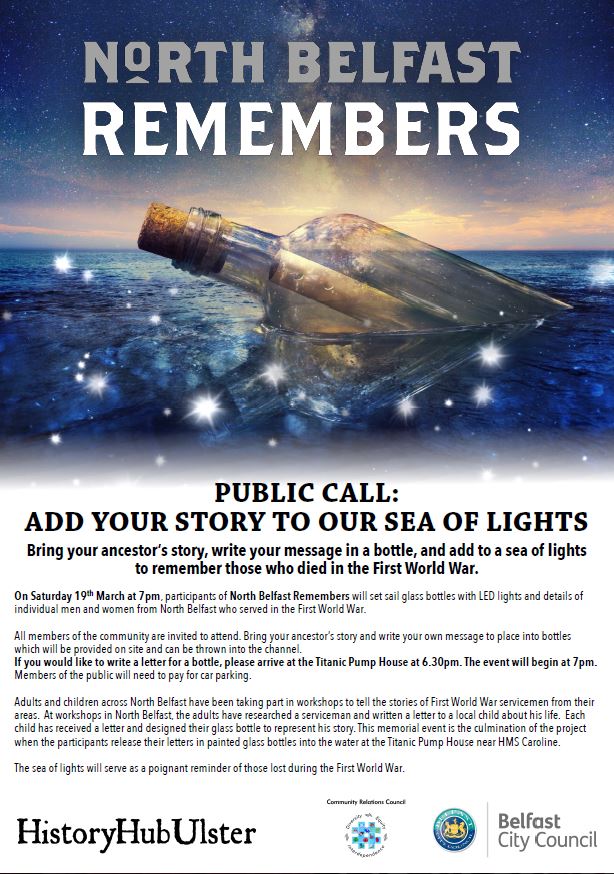
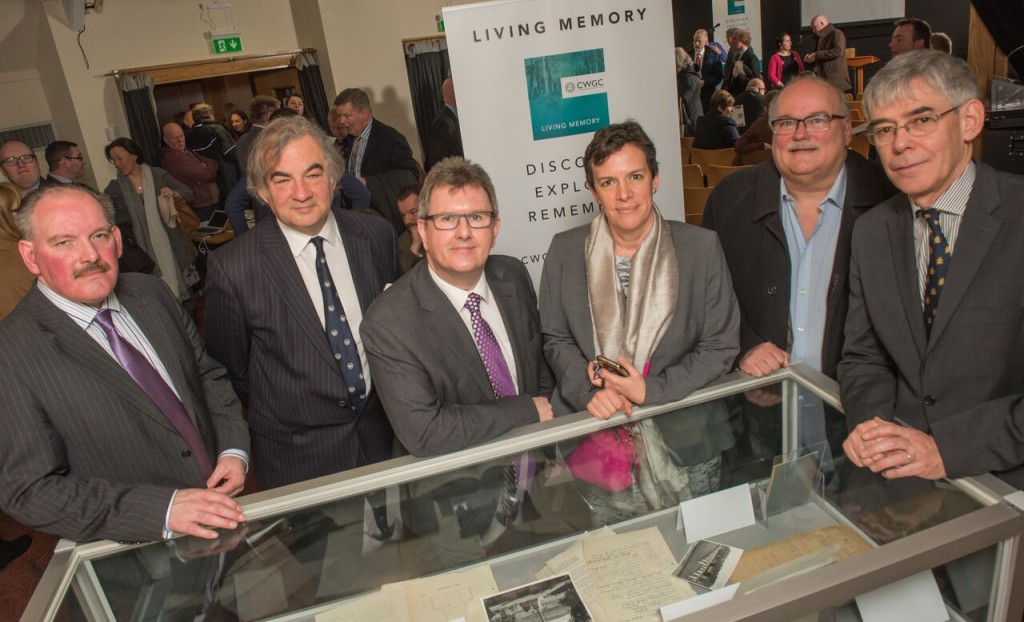
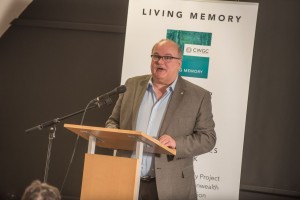 “When people hear about the First World War, they think of the large, set-piece battles on the Western Front, and the cemeteries and memorials there that the CWGC maintains. But there are war graves and memorials literally on your doorstep – many lie in forgotten corners of graveyards. The CWGCs Living Memory initiative aids their rediscovery and remembrance.
“When people hear about the First World War, they think of the large, set-piece battles on the Western Front, and the cemeteries and memorials there that the CWGC maintains. But there are war graves and memorials literally on your doorstep – many lie in forgotten corners of graveyards. The CWGCs Living Memory initiative aids their rediscovery and remembrance.